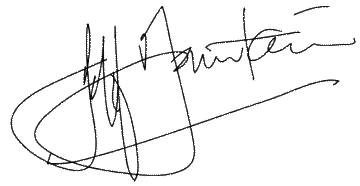A short drive from where I live, just outside of Zwolle, is a leafy gladeon what the Dutch optimistically call a mountain. The Swiss would not evencall Mount St Agnes (Sint Agnietenberg) a hill, but here on this ‘mountain’ was written one of the most widely read devotional books of alltime.
In the centre of this glade stands a large stone monument (designed byCuypers, the architect of Amsterdam’s Central Station) engraved with thewords: Here lived Thomas à Kempis in the service of the Lord and wrote The Imitation of Christ, 1406-1471.
Zwolle has never rivalled Rome or Athens, Jerusalem or Constantinople,Paris or London, as a spiritual or cultural centre. And yet from thissmall city came a classic devotional book that has been called ‘religion’ssecond best-seller’-second only to the Bible. Millions have beenspiritually nourished from its translations in over fifty languages duringits five centuries of existence. Among its avid readers were IgnatiusLoyola (founder of the Jesuits) and John Wesley (of the Methodistmovement). Pope John Paul I had a copy by his deathbed a mere month afterhis inauguration in 1978. It was also the daily companion of the former UNSecretary-General, Dag Hammerskjold.
Catholics, Protestants and Liberals alike claim Thomas and the renewalmovement to which he belonged, the Brothers of the Common Life.For Thomas and the Brothers (who included Sisters too) were key players ina broader Catholic devotional and mystic movement of the fourteenth andfifteenth centuries in the Rhineland and the Netherlands. Called DevotioModerna (The New Devotion), it was the last major renewal movementtolerated within the Mother Church herself before the Reformation.
As the movement’s teaching spread across Europe from the northern Rhinedown into France and Switzerland and as far across as Poland, its emphasison lay involvement, grace and personal relationship with Christ helpedseed Europe for the Reformation. Some claim that the teaching of theBrethren gave direct birth to the Reformation. Both Erasmus and Lutherwere taught by later members of this movement. It certainly had much incommon with seventeenth century Pietism.
For the Brothers’ original intention was to return to New TestamentChristianity and a lifestyle based on simply imitating Christ. A medievalversion of WWJD if you like.
Bricks and tilesIn just three weeks, on this year’s Heritage Trip, we’ll revisit this siteof the Sint Agnietenberg Klooster where Thomas lived, prayed, read andwrote, to reflect on the influence of this man and this movement.Today there’s little to see of the monastery other than a rough pile ofbricks and tiles behind the stone monument. The site is now a cemeterycalled Bergklooster, whose warden is himself a Thomas enthusiast. My wifeand I recently heard him talk on ‘traces of Thomas on the Bergklooster’.In the glade in front of the Thomas monument, we sat with fifty otherguests at a ‘Summer-evening meeting’ sponsored by the Thomas à KempisFoundation. A doublequartet of the Thomas Choir sang and the warden readexcerpts from TheImitation.
We then followed him on a trail through recent gravestones as he indicatedthe former site of the monastery buildings. A graveyard, he explained, wasa place of constant digging, and it was clear where the concentration ofburied building materials lay. He opened his shed to reveal his treasuresof centuries’ old gravestones, and a small selection of The Imitation ofChrist in various languages.
HomeworkThomas was born around 1380 in Kempen, between Krefeld and Venlo close tothe German-Dutch border. Like many other boys from the Rhineland, he wassent to school in Deventer, just up the IJssel River from Zwolle. Theschool was strongly influenced by the two founders of the Brothers of theCommon Life, Gerhard Groote and Florentius Radewijns. The school buildingstill stands today where Erasmus and his contemporary, the Dutch PopeAdrian VI, also studied.
The Brethren stressed the value of learning and the importance of reading,reason enough for Liberals to stake a claim to their heritage. Stilltoday, nestled behind the Zwolle city hall, is a cluster of centuries-oldbuildings where the Brothers offered lodging and help with homework toyoung students.
Thomas proved himself a skilful copyist while in Deventer, and laterentered the newly-formed monastery at Sint Agnietenberg, where he was tospend almost all the rest of his life. There he also copied the Bible atleast four times, one five-volume copy being preserved at Darmstadt.
Thomas’ writings are recognised as collections of teachings,conversations, advice and sayings within the Devotio Moderna, notnecessarily originally his own, including the following:• Without the Way, there is no going, Without the Truth, there is noknowing, Without the Life, there is no living.•At the Day of Judgement we shall not be asked what we have read but whatwe have done.
In a bizarre footnote to his life, one tradition claims that splinterslater found embedded under the fingernails of his corpse revealed that hewas accidentally buried alive. On the grounds that a saint would not fightdeath in this way, he was denied canonization!
Till next week,
Till next week,
